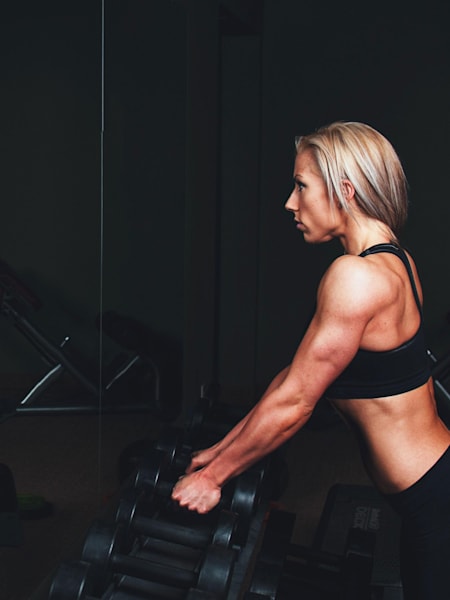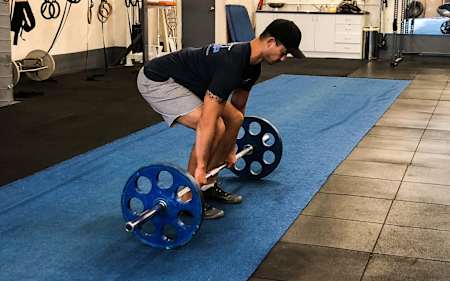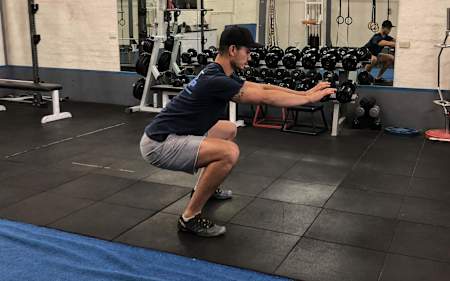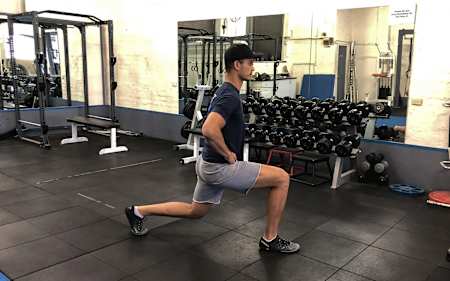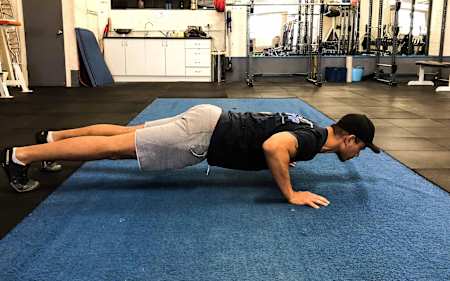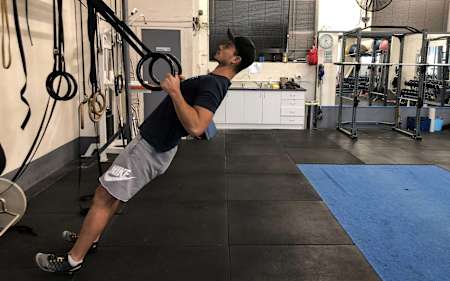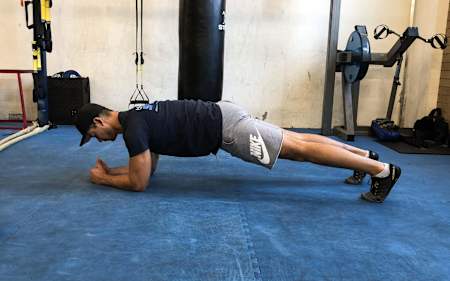For the average person who’s likely desk-bound for most of their working day, postural issues, muscle imbalances and nagging aches and pains are a common occurrence. With this in mind, the way you structure your workouts is of paramount importance.
Exercise should help you counteract the negative consequences of your lifestyle by promoting mobility, functionality, strength and cardiovascular fitness. In turn, this will lead to those all-important results: losing body fat, increasing muscle tone, and feeling limber and pain-free.
Total body workouts can enable you to get the biggest bang for your buck in a training session. The key is to focus on big, fundamental movements and stimulate muscles over your entire body, which will boost your metabolism and burn a ton of calories in the process.
Here’s an overview of some of the best exercises to incorporate into your total body workout.
1. Deadlifts
A deadlift is one of the best total body exercises you can do, and it will stimulate more muscle than any other movement alone. The basic premise of a deadlift is picking something heavy up from the floor. While probably the best single exercise you could do for yourself from a functionality, strength, and fat loss perspective, it also has a lot of practical carryover to everyday life.
Learning the proper mechanics of how to bend or ‘hinge’ at the waist, without flexing your spine is an integral part of this movement. Due to the nature of it, taking the time to start light and learn proper technique is of utmost importance.
Deadlifts are probably the most commonly butchered exercise in terms of form and technique, so keep in mind that deadlifts done badly are bad for you. If you have no idea how to do these properly, hire a good trainer to show you how.
The main muscles used for deadlifts are hamstrings, glutes and your entire back musculature, making it a great postural exercise. It’ll strengthen basically every muscle on the back of your body to help “straighten” you up. A beginner should start with four sets of six reps.
2. Squats
Squats have been labeled the “king of exercises” by many fitness experts, and for good reason. They require a good blend of mobility, stability and functional strength to perform properly, and when done so, are a fantastic full body exercise.
They require a good blend of mobility, stability and functional strength to perform properly, and when done so, are a fantastic full body exercise. Everybody should at least be able to perform a good-looking, controlled, deep squat for a basic level of fitness, functionality, and quality of life.
This exercise is very metabolic, meaning it will stimulate a huge amount of muscle on your body. And it's not just a leg exercise — this is a full body movement, especially if you add additional weight with your upper body. Squats will predominantly target your quads, glutes, hamstrings, and lower back muscles. If you're trying to build up muscle, consider performing three to four sets with seven to 10 reps each as part of your complete body exercise routine.
3. Lunges
Lunges are another great exercise that offer many of the benefits of squats, with the added requirement of stability as you try to co-ordinate and balance whilst moving on one leg. Lunges will target many of the same muscles as squats, as well as the smaller stabilizer muscles required to keep your balance in an uneven stance. For those with back issues or lacking the mobility to squat properly, lunges can be a great alternative (though, ideally, you should do both).
With lunges, you have some variation available in how low you take your lunge. The lower to the floor you go, the harder it will be, so lower your legs as far as you feel comfortable. To incorporate lunges into your total body workout, try two to three sets of 10-12 reps per leg.
There is a big carryover from your lunging functionality and prowess to walking, running and most athletic endeavors. Hip instability is also one of the biggest contributors to falling over among older adults, and unfortunately, our modern-day sedentary lifestyles tend to weaken and “deactivate” our hip stabilizers. So get to lunging!
4. Pushing
Pushing exercises are literally anything that involves a pushing movement.
Pushing can be further broken down into horizontal pushing (e.g. push ups) and vertical pushing (e.g. pressing something above your head).
Any pushing exercise will use some combination of chest, shoulder, and tricep muscles. Depending on the angle of the push, these muscles will be stimulated and used slightly differently.
If anything, pushing exercises are the most common types of exercise included in most training programs, but if not balanced out with ‘pulling’ exercises, can create muscle imbalances, shoulder problems and exacerbate postural issues. So whilst important, don’t overdo pushing movements at the expense of the other exercises.
Some examples of pushing exercises that work out the upper body include push-ups and shoulder presses, both of which can be completed in three sets of 10 reps, with a full rest in between each.
5. Pulling
Pulling movements are literally any exercise that involve a pulling or rowing movement. Like pushing, pulling can be further broken down into horizontal pulling (e.g. seated row) and vertical pulling (e.g. pull-ups with a pull-up bar).
Horizontal pulling movements are a must for anyone who works a desk job, as they will strengthen all the postural muscles in the back and help to balance out the slouched, rounded shoulder position inherent in sitting at a desk. If you're a desk jockey, including two pulling movements for every pushing movement is a good rule to stick by. As always, do what feels right for your body. A variation of these exercises can include less resistance while rowing, for example.
Any pulling workout will activate the arm muscles, including the triceps, biceps, and lats, as well as your core muscles. For horizontal pulling movements, the muscles in your legs are highly activated as well as you work to propel yourself back and forth. As far as sets and reps go, look at each minute of your exercise as a rep, and aim to complete five reps of five sets.
6. Loaded carries
Loaded carries are simply walking while carrying heavy things. These heavy things can be dumbbells, kettlebells, barbells, sandbags — you name it. It's good to mix up the object and the way it's carried, as long as you do it safely. This is a workout that will trigger your back, leg, and shoulder muscles, as well as your biceps and triceps.
A simple and straightforward variation is the farmers walk — just grab a heavy kettlebell in each hand and walk with perfect posture (with an imaginary book on your head) for 30-60 seconds for three sets at a time, making sure to rest in between. Loaded carries will go a long way in bullet-proofing your body, and will greatly improve core and hip stability, back and grip strength, and total body conditioning.
7. Front and side planks
Core training at its best, planks help prevent unwanted movement through the core and help stabilize our lower back and hips without the use of any equipment. So instead of doing sit-ups and crunches, which will wear away the discs in your spine (and do nothing in terms of fat loss or functional carry over), try planking variations to help with core stability.
Instead of holding a relatively passive plank, create your own tension by drawing your elbows towards your toes, straightening out your legs, and squeezing your glutes for three sets of 60 seconds each.
8. Pike roll-out
The pike roll-out involves getting into a push-up position with your feet up on an exercise or stability ball then lifting your gluteus in the air in an almost handstand-like position, except with your feet still on the ball. After, slowly lower your core, allowing the ball to roll along your lower legs until it reaches your knees. This provides a full body workout, but especially targets and activates your core muscles.
Do this exercise with three sets of 10 reps two or three days a week. If this is a difficult workout to accomplish, a variation can include simply rolling the ball along your legs as much as you are able to from the same push-up position.
9. Burpees
The push-up and jump-up motion that you achieve with burpees is most definitely a full body workout that you can change up to include leaps or ankle weights, or hold a dumbbell in each hand. Try doing five sets of burpees lasting 30 seconds each. From the first burpee, you'll feel the pull of your arms, legs, glutes, hamstrings, and abs, while at the end, you can feel accomplished for lasting as long as you did.
It's important that no matter what workout you do, you form a plan that's best suited to your goals and abilities. Push yourself to get to the next level, but don't push yourself too much that you end up injuring yourself. Instead, gradually work up to your ultimate workout goals so you're getting there safely.
Work out as often as feels comfortable for you, but it's advised that you give yourself a resting day or two per week. A workout plan can include a day of focusing on each part of your body (arms, legs, chest, core, etc.), with rest days in between. Remember to listen to your body and consider working with a trained professional to develop a workout plan that's right for you.
About Ben Longley
Ben Longley has been a personal trainer for over 12 years, and is the owner of The Fit Stop, a personal training and group training facility in St Kilda East, Melbourne, specialising in strength training, functional movement and fat loss. For more info about their services, you can visit: www.TheFitStop.com.au.

